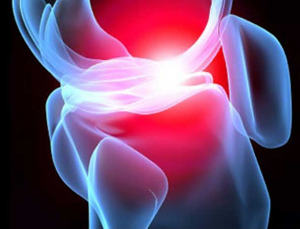 If you experience severe pain and discomfort in your knee you might suffer from damaged cartilage. The cartilage around your knee is a type of rubbery material which covers each end of the three bones located behind the kneecap. The purpose of the cartilage is to absorb shock and to reduce friction in the joints. As your cartilage deteriorates or becomes damaged your movements can be limited and you might experience severe pain in your knee. If you see a knee specialist Los Angeles do not treat the damaged cartilage immediately the condition will worsen to the point that total knee replacement therapy might be required.
If you experience severe pain and discomfort in your knee you might suffer from damaged cartilage. The cartilage around your knee is a type of rubbery material which covers each end of the three bones located behind the kneecap. The purpose of the cartilage is to absorb shock and to reduce friction in the joints. As your cartilage deteriorates or becomes damaged your movements can be limited and you might experience severe pain in your knee. If you see a knee specialist Los Angeles do not treat the damaged cartilage immediately the condition will worsen to the point that total knee replacement therapy might be required.
Who qualifies for cartilage restoration procedures?
The Cartlidge restoration procedures offered by knee specialists are treatments designed for people who are healthy and not affected by arthritis but still facing cartilage deterioration internee. This treatment is often recommended for patients who have recently damage the cartilage in their knee after a sports injury or repetitive use of that joint.
What can I expect during the procedure?
Prior to setting up a cartilage restoration procedure will have an MRI to determine how severe the injury is. MRI is also designed to locate the injury and the size of the damage. Many of these procedures can be done using arthroscope, a popular modern surgical tool which limits pain and recovery time. This surgical tool in the process in which it is used is minimally invasive and typically recommended for knee surgeries. This type of surgery requires an initial incision which is very small. After the first incision is made the orthopedic surgeon will insert a small tube through the incision attached to which is a camera. The camera is connected to the operating room video screen and it provides the surgeon with a larger view of your knee joint so that the surgeon can identify the affected cartilage and severity. In many cases the affected area can be repaired immediately through a secondary incision and microscopic surgical tools. Because of the small incisions in the minimally invasive nature of this surgical procedure those who endure it will have a faster recovery time as well as a faster procedural time compared to standard surgical procedures. This is typically performed as an outpatient procedure which means that you can check in and check out of the hospital on the same day.
What should I do after the procedure?
It is recommended that after the procedure you have somebody take you home and stay with you for the next week. After one week based on the severity of your condition you should be able to begin dressing yourself. In the worst-case scenario you should at least have somebody stay with you for the first night. Within 4 to 6 weeks the healing should be complete. You should speak with your surgeon about a potential rehabilitation processes which your orthopedic surgeon requires. You may need to undergo physical therapy with a licensed physical therapist after the procedure depending on the severity of your case. This form of therapy is imperative in order to regain flexibility in motion in your knee.
For more information, contact a knee specialist in Los Angeles.
